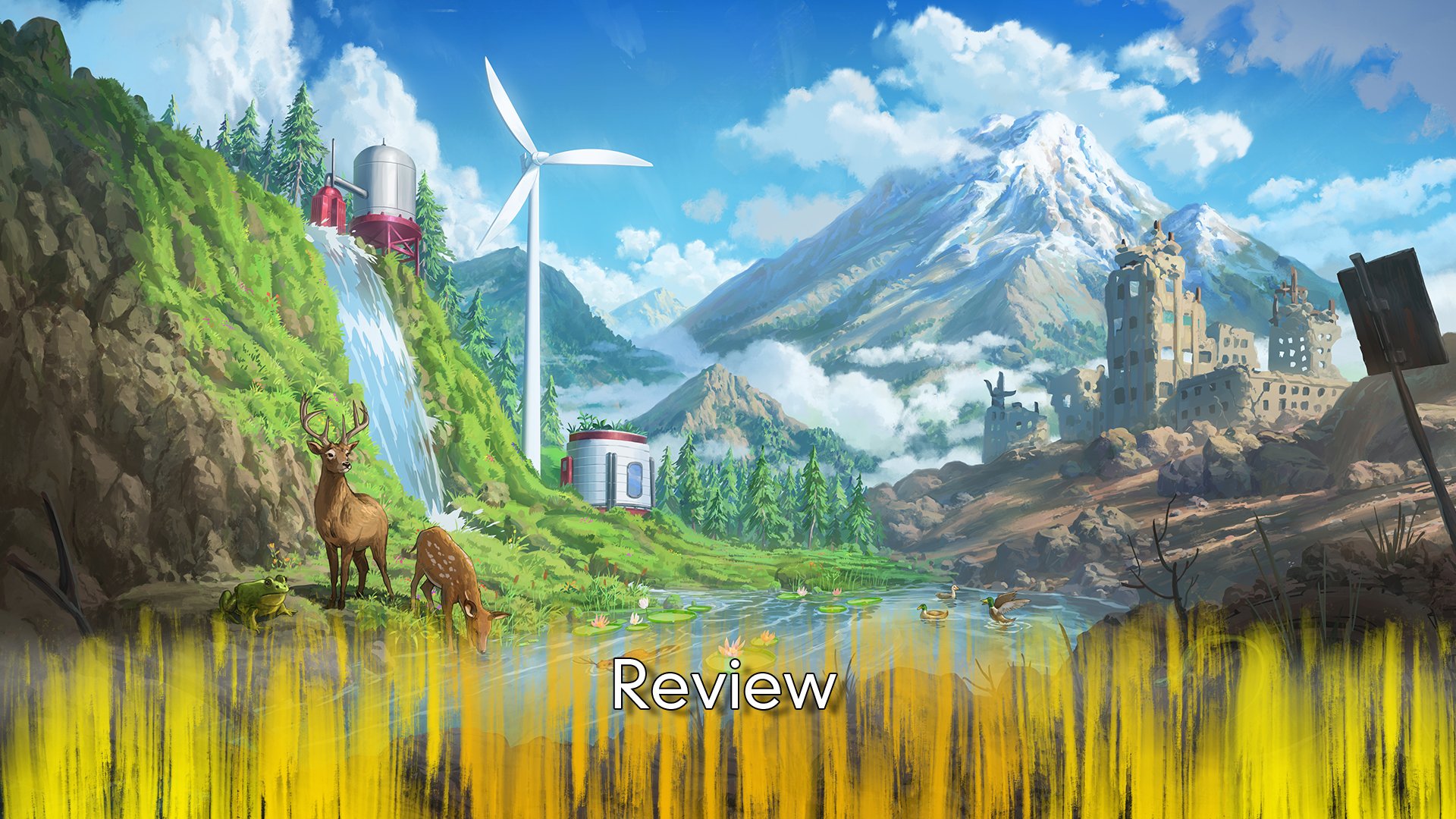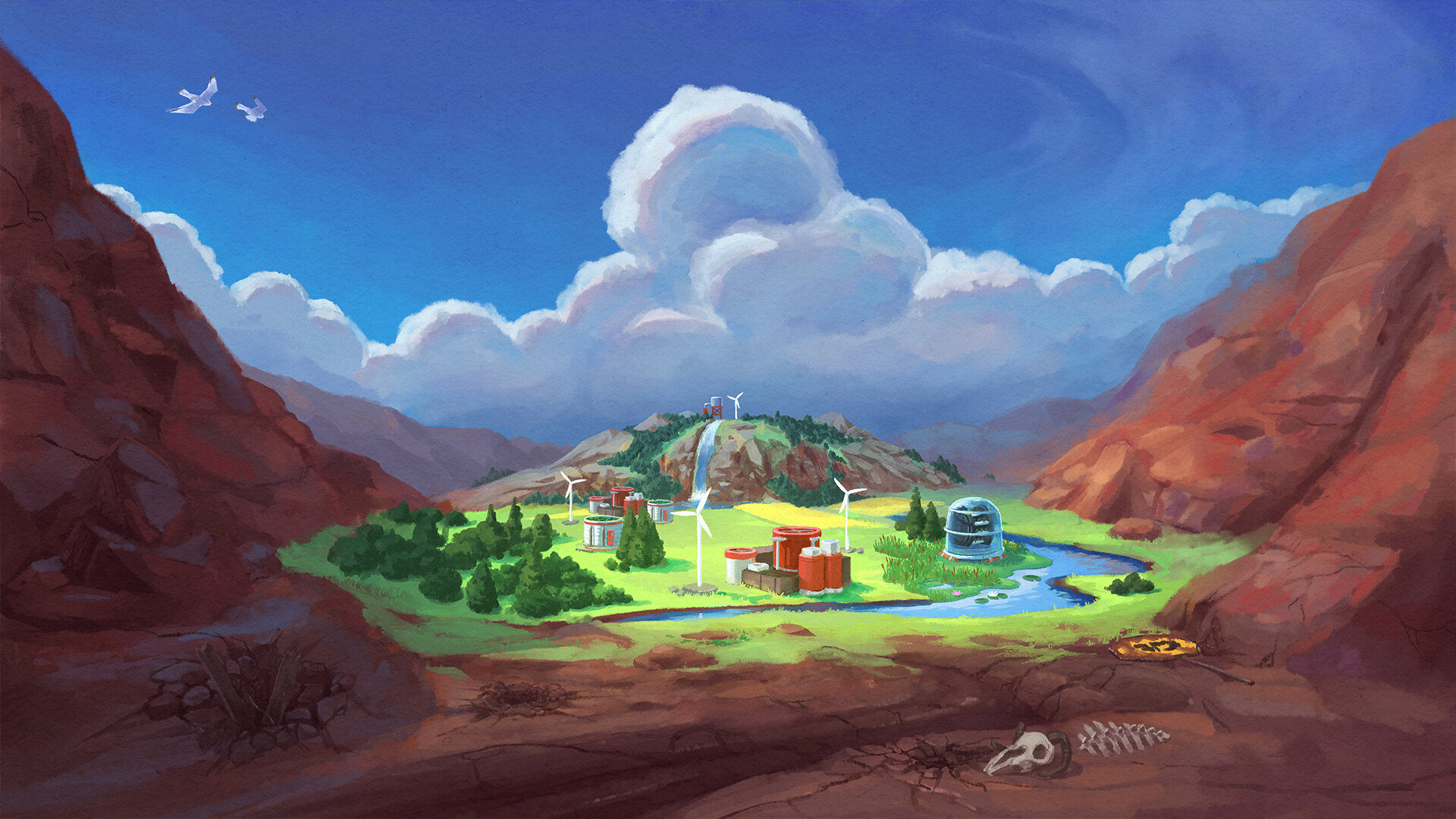Terra Nil - Review

When Terra Nil was first announced, it came with a demo and I put a lot of time into that demo. There was something about the chill nature of reclaiming a wasteland that just felt very nice. Now that the full game is finally here, does it offer up a complete sense of fulfilment or is it left wanting?
The goal of Terra Nil is quite simple, restore the planet to a lush paradise and ensure that you leave nothing behind once you are done. The game is broken up into four areas, each containing two locations and while the names are the same, each time you step into them, the game will randomly create the map. The first location is the easiest, as it also doubles as the tutorial, but with each new location comes new landscape challenges and tasks to complete. The cycle of your work is pretty straightforward, you need to clean up the area, restore vegetation and animals and then take all your equipment with you before you leave. As each location is randomly created when you visit it, there is no way of knowing just how easy or hard the task you have ahead of yourself is. When I went into the mountains for the second time, the area had no space for me to erect a wind turbine, which had honestly been the starting point in each map before then. Because of that randomness, I had to make sure that each time I went in, I took the time to learn the lay of the land, as plopping things down without a plan isn’t going to help in the long run.
In order to clean up a space you need power to start and for most levels that means placing a wind turbine down on the rocks and from there you can put down some toxin scrubbers. Once you have started to clean the land or sea, you can then start to put down some irrigation machines, to help turn the fresh soil into grass. Once you have cleaned up a good portion of each map, the tasks evolve and this is where things can get really tricky if you are not paying attention. Sticking with the first area, one of the requirements is to place down some wetlands, but they can only be placed on top of irrigating machines and near water. They also will grow best if there is plenty of humidity in the air, if there is too little, they may not spawn as much, even if the space is large enough for them. Ensuring that you have a balance in terms of the humidity, land and water is crucial to growing the right elements, but in later levels there are some machines that can only work if there is less than a set number of humidity.
While the main goals are fairly achievable, there are extra goals that you can work towards as well, that might prove a little more challenging. In the mountainous region, snow is your biggest headache and in order to build anything, you must first clear it away, but if the temperature is not high enough, then snow can start to fall and undo your hard work. These secondary goals are not all achievable in a single playthrough, so you will have to revisit some locations in order to finish them off, for example to low of a temperature means you can’t have a beach, but too high means you can’t have coral.
The only real challenge comes when you pick your difficulty level, those who opt for the easiest will be given a slew of additional perks. These range from cheaper resource requirements and a higher starting balance, whereas the more challenging level, removes the recycling option if you run out of resources and more. Depending on your skill level the easiest could be too easy and the hardest a little too challenging, but the game does offer a custom mode if you prefer. It also offers a Zen mode, where you can go after the objectives, without the need to worry about resources, though map sizes are still a factor.
The Zen mode segues into a few issues I have with the game, Zen mode is only an option via the settings between levels. So, you have to go into the options and turn it on, there is no option on the front screen or the map screen to just go and do it, while it’s not an issue that breaks the game, it sort of defies its name. Another issue is that the maps are a bit on the smaller side, not to say they are tiny, but their lack of scale means it won’t take long to complete one, especially when you are just trying to knock out a few final objectives. Something that popped up for me all the time though, were the pop ups from the item bar, when you go to select the item you want to put down. Hovering the mouse over would trigger the pop up to appear, giving you more details about the item, but occasionally it wouldn’t go away, until I shook the cursor all over the place. The final complaint I have about the game is the camera, specifically the lack of rotation on it, as the game is played from an isometric viewpoint, if something larger is placed in front of something smaller, you won’t be able to see the small item. There was an instance where I had to zoom all the way in and then count the pixels to see a monorail pylon behind a dredging unit, in order to select it. Even some of the foliage can get in the way of seeing or clicking on items, so it is something to be aware of.
As far as the presentation goes, the game sports a simple look, but everything has a hand painted feel to it. The grass, when it’s around, is lush and green and when you see animals calling it home like deer or flamingo, you will spot little black lines around, to help them pop out. A lot of the maps deal with larger bodies of water, some of them more than the others and being able to see down into the depths of the ocean, with coral, seaweed and various aquatic creatures that call it home is wonderful. Even when you set fire to your hard work, it still looks amazing and trust me, you will set things on fire. When you start a new region or phase within, your guidebook will pop up and it feels all handwritten, complete with sketches of animals and plants. The game looks simple, but still manages to impress across the board.
Perhaps even more impressive is the game’s audio mix, though I did have to turn the music down a bit as the default was a bit too loud. When you start in a region there are no sounds, no birds chirping, no rain falling, nothing, it’s as barren audially as it is visually. But as you restore the world, more life comes back in via sounds, placing a beach has the sound of waves added to your little world. Setting things on fire usually means activating a machine and that action leads to a blazing inferno, it all sounds great. A touch that you may not even notice at first is that where your mouse pointer goes, the sounds of the world are amplified. When ice forms and you move your mouse over it, you will hear the sounds of cracking ice, not a lot of it, but enough to help you realise that the ice is moving.
Terra Nil has been a true delight to play, the lack of timers or characters demanding attention means that you can just enjoy the game at your own pace, a real rarity these days. The games loop of restoring a region and moving on is satisfying and while there are only a few locales, you can jump back in over and over, should you desire to. Some issues are present, the small map size and easily obstructed buildings are just some of them, but they never really detract from the fun of playing the game. The game is not about racking up high scores or building giant metropolises, but rather about taking your time and appreciating the world and the end result is that Terra Nil is something truly remarkable.
The Score
9.0
Review code provided by Devolver Digital
The Pros
+Being able to see life come back to the locations, based on your actions feels satisfying
+The locations are different enough that they will test you when you first visit them
The Cons
-There were times when I was not able to see items as they were hidden by others or the foliage
-The map sizes are a bit on the small side and repeated visits will highlight that a little more each time









